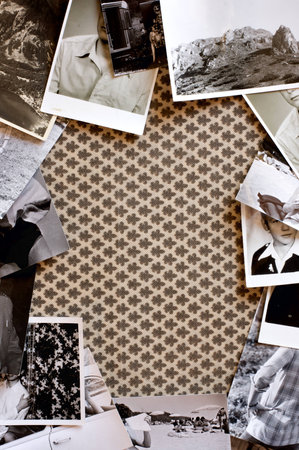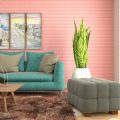Understanding British Interior Preferences
The relationship between the British and their homes is steeped in both tradition and an ever-evolving sense of personal style. When it comes to wallpaper, the choices that define interiors across the UK are often influenced by a blend of heritage, practicality, and a quiet assertion of individuality. Historically, British décor has favoured subtlety—think muted florals or understated damasks echoing the restrained elegance of Georgian townhouses or Victorian parlours. These subdued hues have long provided a canvas for timeless sophistication, serving as a backdrop for cherished antiques and family heirlooms.
However, as contemporary influences permeate British design sensibilities, there is a growing appetite for bolder statements within the home. Modern interpretations see homeowners experimenting with daring prints and textured wallpapers, injecting personality into spaces while still nodding to classic roots. This tension between boldness and restraint defines the current landscape of wallpaper preferences in Britain. The choice between striking motifs and soft palettes is rarely about following fleeting trends; rather, it’s about expressing one’s taste while respecting the enduring values of comfort, quality, and subtlety that underpin British domestic life.
Bold Prints: A Statement of Personality
In the tapestry of British interior design, bold prints have long served as a vibrant declaration of individuality and taste. While some may associate British homes with restrained elegance, there exists a parallel tradition of embracing expressive wallpapers that speak volumes. From florals reminiscent of Victorian parlours to contemporary geometric patterns, bold prints have made their mark in both period properties and modern flats.
The appeal of such daring designs lies in their ability to transform a space instantly. A statement wall clad in oversized botanicals or dramatic damasks can anchor a room, creating a focal point that draws the eye and sets the tone for the entire decor scheme. In Britain, where architectural features like high ceilings or ornate cornicing are common, bold prints complement and even enhance these period details.
But when and where do bold prints truly shine in British interiors? The table below outlines some popular settings and strategic uses for statement wallpaper:
| Room/Area | Recommended Bold Print Style | Reason for Suitability |
|---|---|---|
| Lounge/Living Room | Large florals, Art Deco geometrics | Adds warmth and drama to social spaces; pairs well with classic British upholstery |
| Hallway/Entrance | Tropical motifs, heritage stripes | Makes an impactful first impression; brightens traditionally narrow or dim areas |
| Powder Room/Downstairs Loo | Whimsical prints, nature-inspired patterns | Offers an opportunity for playfulness in smaller spaces; surprises guests |
| Dining Room | Regency-inspired damasks, metallic highlights | Creates an atmosphere of grandeur and conviviality for gatherings |
Ultimately, integrating bold prints into British homes is about balance and confidence. Layering them with solid-coloured furnishings and traditional accents allows homeowners to celebrate personality without overwhelming the senses. As trends evolve, these statement wallpapers continue to offer a canvas for self-expression while honouring the rich decorative heritage that is so distinctly British.
![]()
3. Subdued Hues: Subtlety and Sophistication
When it comes to British interiors, there is a longstanding affinity for subtlety and sophistication—qualities that are epitomised by subdued hues and gentle textures in wallpaper design. Rather than vying for attention with loud patterns, these muted tones create an air of understated elegance, quietly enhancing the atmosphere without dominating the space. In classic British homes, soft greys, dusty blues, and pale greens often form the backbone of drawing rooms and studies, reflecting a preference for calm and timelessness over fleeting trends. These colours pair harmoniously with heritage furniture, polished woodwork, and intricate cornicing, allowing architectural details to shine while cultivating a sense of comfort and refinement.
In modern British settings, the appeal of subdued palettes persists but adapts to contemporary sensibilities. Minimalist apartments and updated period properties alike benefit from wallpapers featuring delicate linen textures or barely-there botanical motifs in chalky whites, taupes, or sage. The use of matte finishes rather than gloss further reinforces a look that feels considered yet relaxed. For many homeowners across the UK, this restrained approach fosters versatility; spaces can be easily adapted with seasonal textiles or artwork without clashing with bold wallcoverings.
Ultimately, the enduring popularity of subdued hues in British wallpaper speaks to a national appreciation for quiet luxury—a desire for interiors that feel welcoming and well-balanced rather than ostentatious. Whether used as a backdrop in a grand Georgian parlour or a compact city flat, these gentle colourways and soft textures invite inhabitants to linger and guests to feel at ease, embodying the best of British hospitality and taste.
4. Texture Matters: Beyond the Surface
While colour and pattern often dominate discussions about wallpaper, it’s the tactile dimension that truly brings a space to life in British interiors. Across the UK, homeowners and designers alike are increasingly drawn to the physical depth and quality that textured wallpapers offer, adding another layer of sophistication whether opting for bold prints or subdued hues.
Embossed wallpapers—those with raised patterns—have long been a staple in traditional British homes. Their subtle interplay with light creates gentle shadows, lending rooms a sense of heritage and refinement. Likewise, woven or grasscloth wallpapers introduce organic textures that feel both contemporary and timeless, perfect for modern British flats seeking warmth without fussiness.
Common Types of Textured Wallpapers in the UK
| Texture Type | Description | Typical Use in British Interiors |
|---|---|---|
| Embossed | Raised motifs, often floral or geometric | Formal dining rooms, Victorian terraces |
| Woven/Grasscloth | Natural fibres woven into paper backing | Contemporary lounges, eco-conscious spaces |
| Flocked | Velvety patterns for a plush feel | Boutique bedrooms, statement walls |
| Anaglypta/Lincrusta | PVC or paper-based relief designs, paintable | Corridors, period properties for restoration projects |
The Role of Texture in Balancing Prints and Colours
Texture serves as a bridge between bold prints and muted tones. For instance, pairing a dramatic damask pattern with an understated embossed surface can temper visual intensity while maintaining interest. Conversely, textured neutrals—such as subtle linen effects—ensure that even the most restrained palettes feel rich rather than flat. This nuanced approach aligns closely with British preferences for interiors that are both inviting and quietly distinctive.
Tactile Experience and Practical Considerations
Beyond aesthetics, textured wallpapers offer practical benefits: they disguise minor wall imperfections common in older British homes and are often more forgiving than flat finishes. Maintenance varies; while vinyl-coated embossed options are wipeable (ideal for busy households), natural fibres may need more care.
Key Takeaway for British Homes:
When selecting wallpaper, consider how texture can elevate your scheme—be it through classic embossing in a Georgian semi or a modern woven finish in an urban loft. In the ongoing dialogue between bold prints and subdued hues, the right tactile element can be the detail that sets your space apart.
5. Marrying Bold and Subdued: Achieving Balance
One of the hallmarks of British interior style is its effortless ability to blend the daring with the understated—a tradition honed over generations. For those looking to combine bold prints with subdued hues in wallpaper, the key lies in thoughtful curation and a measured approach. Begin by identifying a unifying colour or motif that can anchor your scheme; for example, a deep navy from a striking floral can be echoed subtly in plainer, softer backgrounds. This creates continuity and prevents visual chaos.
Layering is another cornerstone of British design sensibility. Rather than allowing bold patterns to dominate entire rooms, introduce them as feature walls or within alcoves, complemented by muted tones elsewhere. This nods to the classic British penchant for restrained elegance while still embracing personality. Equally important is scale: large, dramatic prints work best when offset by simpler elements—think solid-coloured furnishings or lightly textured textiles.
Texture also plays a significant role in achieving balance. Pairing a vibrant, patterned wallpaper with matte paint finishes or natural materials such as wood and wool can soften the overall effect. In traditional British homes, it’s common to see ornate wallpapers paired with wainscoting or painted panelling, grounding the design and lending it timeless appeal.
When mixing prints, keep the British love for heritage in mind—stripes, botanicals, and tartans can coexist beautifully if united by palette or proportion. Limit your primary pattern to one dominant feature, then support it with smaller-scale motifs or gentle gradients elsewhere. This ensures harmony rather than competition between elements.
Finally, don’t be afraid to inject a sense of quirkiness—a trait cherished in many British interiors. A boldly patterned hallway might give way to a calm sitting room, reflecting both confidence and comfort. By thoughtfully marrying bold prints with subdued hues and textures, you create spaces that feel distinctly British: balanced, layered, and full of character.
6. Cultural Nuances and Regional Influences
When navigating the world of British wallpaper, it is essential to recognise that local traditions and regional identities play a significant role in shaping interior choices. Across the UK, one finds that the vibrant bold prints often favoured in metropolitan areas like London or Manchester differ markedly from the more subdued hues commonly found in rural cottages or historic homes in the Cotswolds. This divergence is not merely a matter of personal taste but deeply rooted in each region’s heritage, architectural legacy, and even climate.
Heritage Properties and Historical Legacy
Britain’s wealth of heritage properties—from Georgian townhouses to Victorian terraces—profoundly influences wallpaper selection. In many cases, homeowners and designers aim to preserve period authenticity, opting for wallpapers that echo original designs or colours. Subdued palettes such as muted greens, gentle blues, and soft creams are especially prevalent in these contexts, reflecting both historical accuracy and a respect for the building’s character.
Regional Aesthetics: North versus South
The north-south divide in British aesthetics manifests in wallpaper preferences as well. Northern regions, with their industrial history and often greyer weather, may lean towards warmer tones or intricate patterns that add vibrancy to interiors. In contrast, southern counties—particularly those with connections to coastal landscapes—tend to favour lighter shades and delicate textures that evoke a sense of airiness and tranquillity.
Local Traditions and Contemporary Adaptations
Local craftsmanship remains influential too; areas known for traditional printing techniques or textile production may celebrate bold motifs inspired by regional flora or folklore. Meanwhile, modern interpretations see these motifs reimagined in contemporary colourways, striking a balance between nostalgia and innovation. Ultimately, understanding these cultural nuances ensures that wallpaper choices resonate authentically within their specific British setting.


